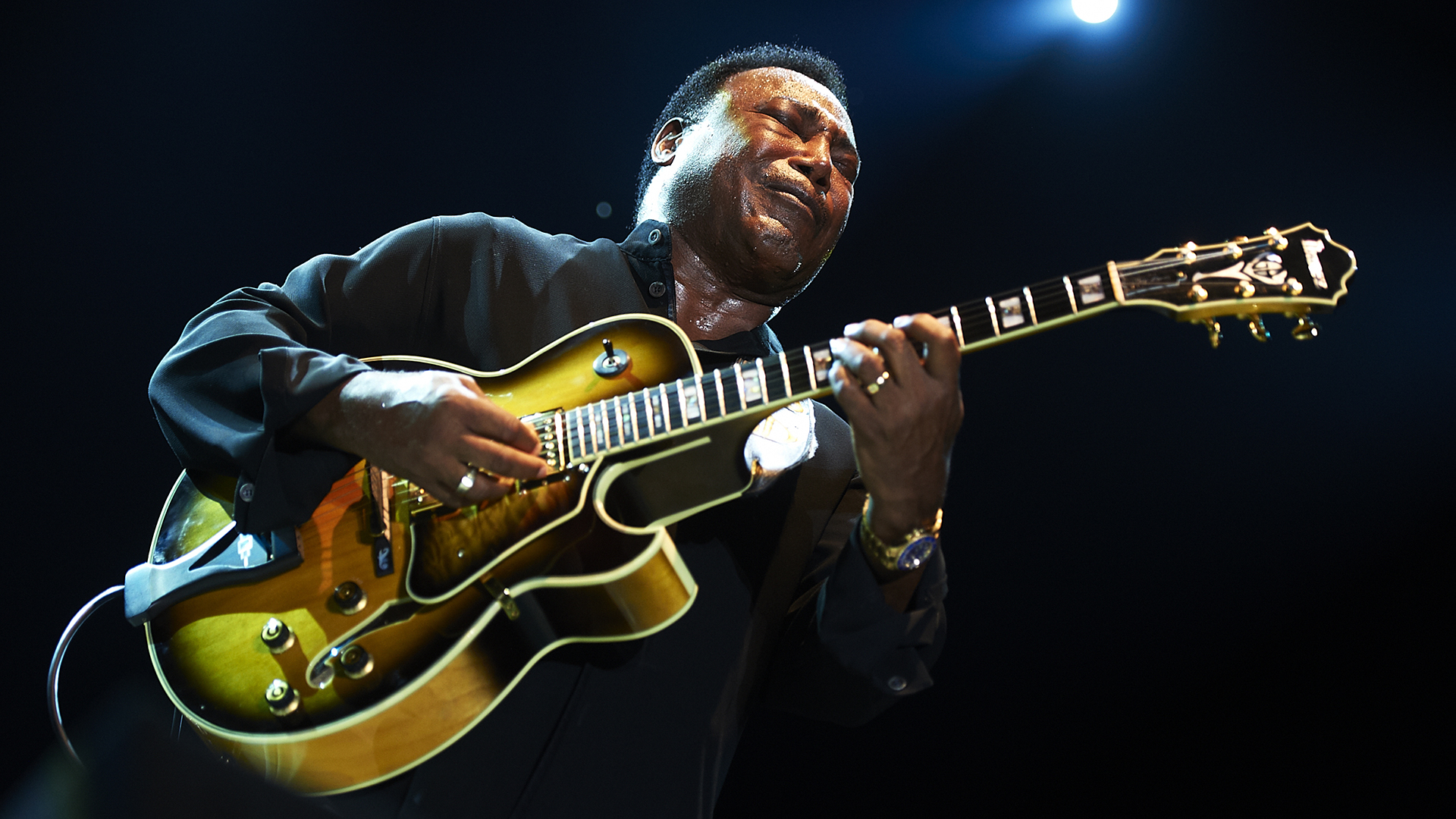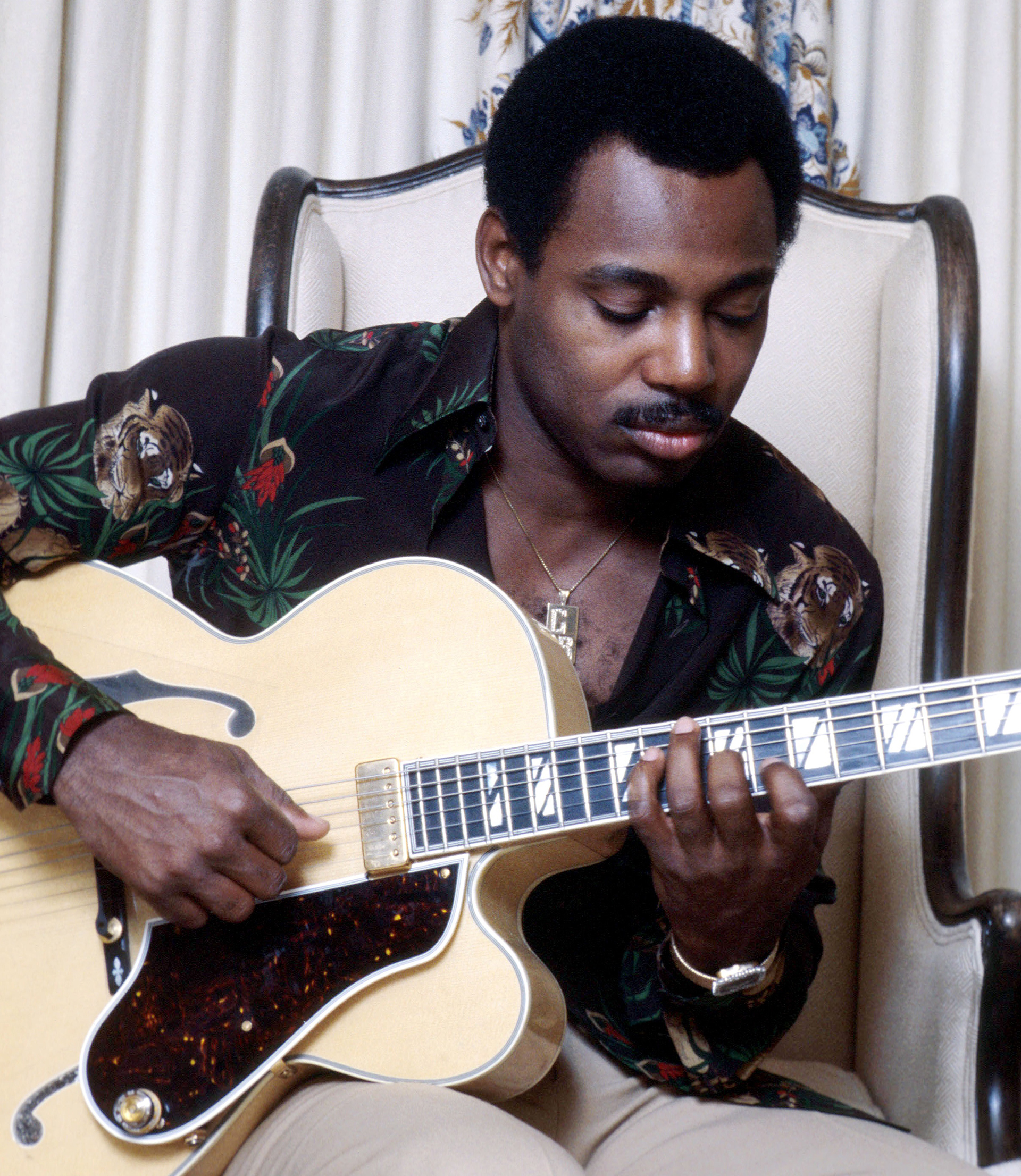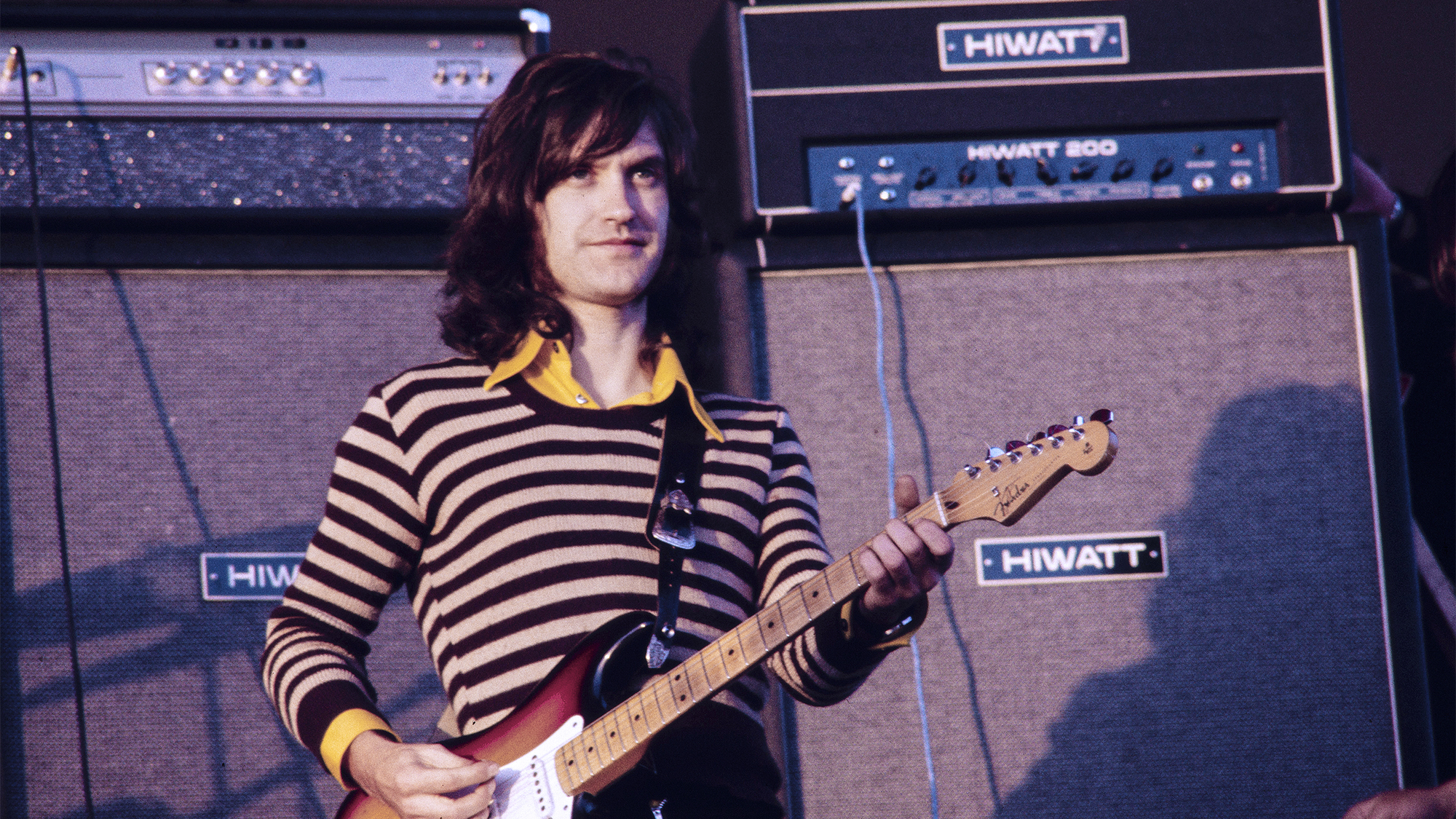“Bobby came in and he went, ‘Da-da-da-da-da-da-da DUH-daaa!’ I said, ‘That’s the only thing you think I should do?’” George Benson tells how one small change turned the song “Breezin’” into an instrumental guitar sensation
The guitarist also shares how he got his Gibson Johnny Smith guitar for a steal

“Breezin’’” may be the song that made George Benson a pop-music star, but it took some convincing for the guitarist to record it in 1976 for the album of the same name. The act or persuasion was performed by none other than the song’s composer, Bobby Womack.
But “Breezin’” wasn’t some untested tune. The song had been recorded several times before Benson tried his hand at it.
A guitarist and singer, Womack was a long-established composer and guitarist before Benson put his signature style on the cut. Born in Cleveland, Ohio, Cooke was discovered by soul singer Sam Cooke in the 1950s while a member of the gospel act the Womack Brothers. Cooke changed their name to the Valentinos and produced their breakout hit, “Looking for a Love,” in 1962.
Their next hit, a tune by Womack called “It’s All Over Now,” got the attention of an up-and-coming British group by the name of the Rolling Stones. Although Womack protested the group’s request to cover the song — he was opposed to white artists having success with Black artists’ music — Cooke convinced him it would be good for his career. Womack relented, and the Stones’ cover went on to become their first number-one hit.
Over the decade, Womack's songs would be recorded by Wilson Pickett and Aretha Franklin, and by the turn of the decade he was playing guitar with Janis Joplin, appearing on her posthumous album Pearl, which also features his song “Trust Me.”
By he early 1970s, Womack was recording and collaborating with Hungarian guitarist Gabor Szabo on his album High Contrast, produced by Tommy LiPuma for his new label, Blue Thumb. It was here that “Breezin’” first appeared. Although Womack wrote lyrics for the song, he and Szabo cut it as an instrumental and made it the lead track for the album, which features three other Womack contributions alongside a trio of Szabo compositions.
Released as a single, “Breezin’” did well, reaching number 43 on the Billboard R&B charts that year. Soon after it proved popular in Jamaica, where it was covered by Mike Chung & the Now Generation in 1972 and the Boris Gardiner Happening in 1973. Meanwhile, the U.S. soul-funk group Sammy Gordon & the Hiphuggers released their own soul version of it in 1972.
But listen to those versions and you’ll notice somethings missing: the famous double-stop lick Benson plays between verses. That simple phrase is the song’s calling card, but it wasn’t on the original recording or those that followed in the years immediately after its release.
Even without it, Tommy LiPuma knew the tune still had gas in the tank. By 1976 he was producing George Benson’s new album, and he was convinced the guitarist should try his hand at Womack’s song.
But getting Benson onboard was difficult.
“The funny thing is, I didn’t think I should record it,” Benson says. “It had already been done [at least] two times before, and Bobby Womack’s recording of it [with Szabo] was magnificent — great rhythm, beautiful bass line. I thought, I can’t do anything better with it. Leave it alone."
But LiPuma didn't give up. "Finally, I said, ‘I’ll consider it, but can you get Bobby Womack to come to the studio?'" Benson asked. "'Maybe he can give me a new idea.’ ”
At LiPuma’s invitation, Womack came to Capitol Records’ studio in Hollywood, where the sessions were going down. As it happened, Womack knew what his song was missing — a hit-making lick. And he already knew what it should be.

“Bobby came in and he went, ‘Da-da-da-da-da-da-da DUH-daaa!’” Benson recalls, singing the song’s famous double-stop lick. “That’s the lick everybody knows. It was something he always wanted to put on his record.
"I said, ‘That’s the only thing you think I should do?’ And he said, ‘Sure. It’s the way I want to hear it.’
“So I went with that little change to the melody, and it made all the difference in the world. That was the line that took ‘Breezin’’ to the public. It was the big hook.”
Benson’s choice of electric guitar for the recording was his Gibson Johnny Smith. As he recently explained to Guitarist, he bought it from a man who retrieved from his girlfriend’s former beau. “His girlfriend sent him to her old boyfriend's house to get the guitar she had just bought for him before they broke up," Benson explained.
"He went over there and knocked on the guy's door. I'd call that brave! The guy came to the door and said, 'No, man, not my guitar!' He said, 'Yep, you've got to give it up.'"
The man subsequently sold the instrument to Benson. "He didn't play guitar and said, 'Man, I've got a guitar here, and somebody said you might be interested.' I said, 'Let me see it.' It was an old Johnny Smith guitar."
Benson quickly realized the guitar wasn't that old, nor was it budget model. "I knew what it was worth,” he says, “but I made him an offer of about half of what it was really worth. He said, 'Man, can't you give me more than that?’ I said, 'Okay, I'll add another $50.' He said, 'Well, that’s more than the other guys, you got it.' "
The guitar made its debut on the Breezin’ album.

“I used two things I’d never played before,” Benson tells Guitar Player about recording the album. “The first was this brand-new Gibson Johnny Smith guitar.” The second? “I took it to the studio and put it through a Polytone amplifier. The company wanted me to use their amps, so I decided to give one a try. The two things together gave me a sound I never had before.”
Of course, “Breezin’” isn’t the only hit from the album. The single was preceded by the album cut “This Masquerade,” the number 10 Billboard Hot 100 release that made Benson a star. “Breezin’” didn’t do quite as well on the charts — it hit number 63 on the Hot 100 and number 13 on Billboard’s Easy Listening chart — but it’s become the defining guitar instrumental in his deep catalog that includes more than 40 albums across a genre-hopping career that never shied away from six-string experimentation.
George Benson is now launching a new chapter with Breezin' With the Stars, his four-day workshop-meets-interactive music event. He also recently announced the sale of some of his most iconic guitars, including his iconic Gibson Johnny Smith, which is now currently listed on Reverb for a whopping $999,999.
All the latest guitar news, interviews, lessons, reviews, deals and more, direct to your inbox!
Christopher Scapelliti is editor-in-chief of GuitarPlayer.com and the former editor of Guitar Player, the world’s longest-running guitar magazine, founded in 1967. In his extensive career, he has authored in-depth interviews with such guitarists as Pete Townshend, Slash, Billy Corgan, Jack White, Elvis Costello and Todd Rundgren, and audio professionals including Beatles engineers Geoff Emerick and Ken Scott. He is the co-author of Guitar Aficionado: The Collections: The Most Famous, Rare, and Valuable Guitars in the World, a founding editor of Guitar Aficionado magazine, and a former editor with Guitar World, Guitar for the Practicing Musician and Maximum Guitar. Apart from guitars, he maintains a collection of more than 30 vintage analog synthesizers.
- Andrew Daly
- Joe BossoContributing Writer

